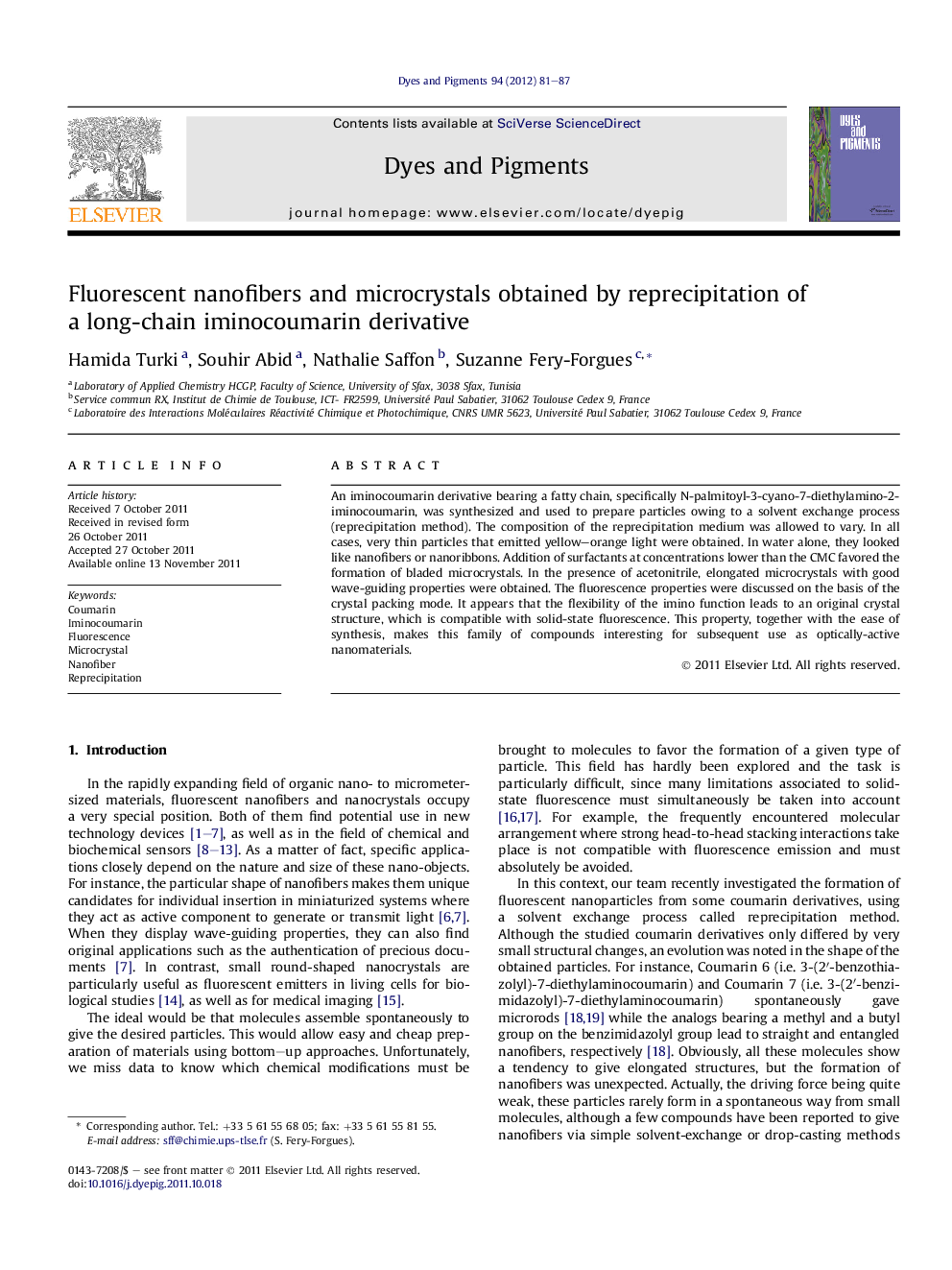| Article ID | Journal | Published Year | Pages | File Type |
|---|---|---|---|---|
| 176770 | Dyes and Pigments | 2012 | 7 Pages |
An iminocoumarin derivative bearing a fatty chain, specifically N-palmitoyl-3-cyano-7-diethylamino-2-iminocoumarin, was synthesized and used to prepare particles owing to a solvent exchange process (reprecipitation method). The composition of the reprecipitation medium was allowed to vary. In all cases, very thin particles that emitted yellow–orange light were obtained. In water alone, they looked like nanofibers or nanoribbons. Addition of surfactants at concentrations lower than the CMC favored the formation of bladed microcrystals. In the presence of acetonitrile, elongated microcrystals with good wave-guiding properties were obtained. The fluorescence properties were discussed on the basis of the crystal packing mode. It appears that the flexibility of the imino function leads to an original crystal structure, which is compatible with solid-state fluorescence. This property, together with the ease of synthesis, makes this family of compounds interesting for subsequent use as optically-active nanomaterials.
► A long-chain iminocoumarin led to microparticles owing to a solvent exchange process. ► Various types of particles can be obtained according to the experimental conditions. ► The compound is fluorescent in the solid-state. ► This is explained by an original crystal packing mode.
